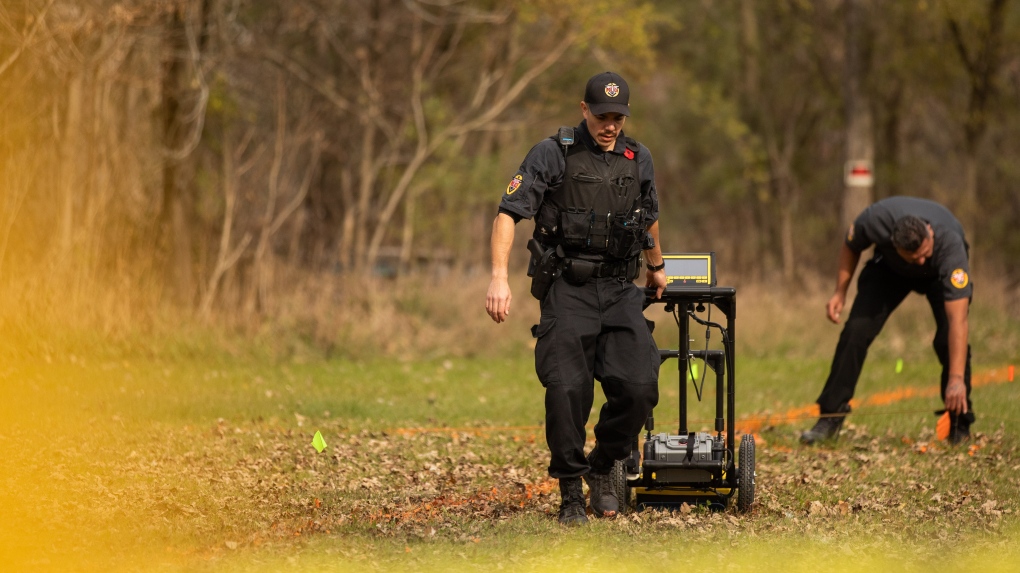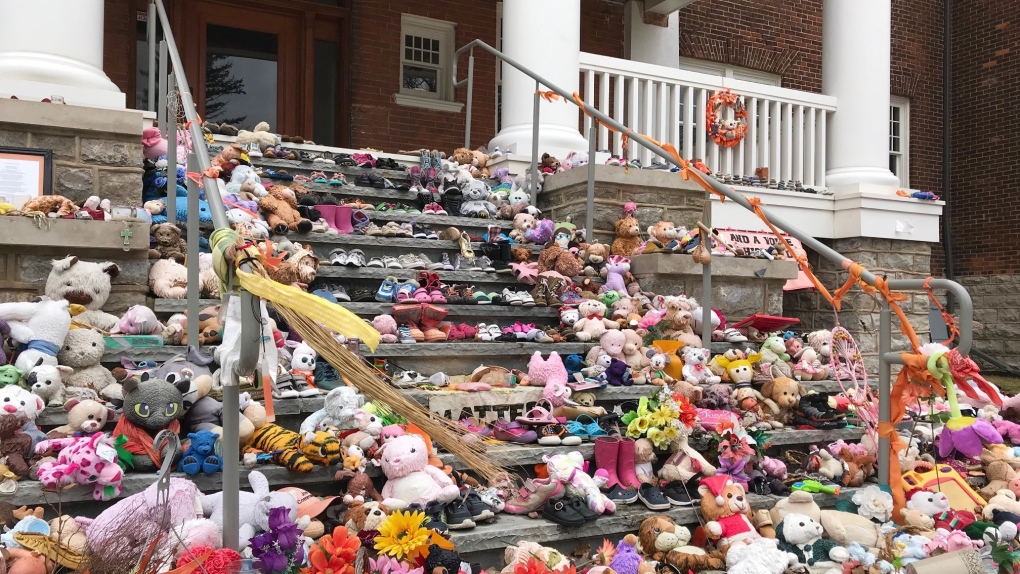Investigation at former Mohawk Institute in Brantford shifts from criminal to coroner-led
It’s been about a year and a half since the investigation began into what happened at a former residential school in Brantford, Ont., and now the focus is shifting from criminal to coroner-led.
The Mohawk Institute Residential School is considered to be Canada’s longest-running residential school. It was in operation from 1828 until 1970.
The goal of the search for unmarked graves is to help bring survivors one step closer to reconciliation.
The group, the Survivors’ Secretariat, said a coroner-led investigation will change the focus from placing the blame on individuals to creating opportunities for closure.
“A coroner investigation differs as its focus is on the victim, rather than the culprit,” the group said in a media release.
The group is hoping that this change will mean they will have more access to data uncovered with more resource sharing amongst the investigators and archival researchers.
HISTORY OF THE INVESTIGATION
The investigation in Brantford was launched shortly after hundreds of suspected unmarked graves were found at former residential schools in B.C.
In October 2021, a task force could be seen getting trained on the equipment. Ground penetrating radar was used at Chiefswood Park in Oshweken.
“It’s like a fish finder but for the earth,” said Arnold Jacobs with Six Nations Police, at the time.
The official search started a month later at the site of the former Mohawk Institute, now known as the Woodland Cultural Centre.
 Members of the Six Nations Police conduct a search for unmarked graves using ground-penetrating radar on the 500 acres of the lands associated with the former Indian Residential School, the Mohawk Institute, in Brantford, Ont., Tuesday, November 9, 2021. (THE CANADIAN PRESS/Nick Iwanyshyn)
Members of the Six Nations Police conduct a search for unmarked graves using ground-penetrating radar on the 500 acres of the lands associated with the former Indian Residential School, the Mohawk Institute, in Brantford, Ont., Tuesday, November 9, 2021. (THE CANADIAN PRESS/Nick Iwanyshyn)
In January 2022, the federal government committed to providing the team leading the ground search with $10 million over three years.
Last September, the survivors’ group said through records a total of 97 deaths were tied to the former Mohawk Institute.
The toll is more than double what the National Centre for Truth and Reconciliation initially reported.
“I think we can safely anticipate that we're going to continue to hear and see in the records that children died,” Laura Arndt lead of the Survivors’ Secretariat said last fall.
ONTARIO’S CORONER RESPONDS
Ontario’s Chief Coroner, Dirk Huyer, said their office has been working with Six Nations Police, Ontario Provincial Police (OPP), Brantford Police and the Survivors’ Secretariat since the beginning.
“The police had been leading the investigation,” he said. “The police are drawing their work to a close, and we’re continuing the work we’ve been doing to answer as many questions we can about the children that died.”
Huyer said their office will continue to work with the survivors group.
“To investigate the circumstances of death for any child that may have died,” Huyer said. “Our role as the coroner is to answer questions about who died, where they died, when they might have died, the medical cause and then where they might be buried.”
 (Dan Lauckner/CTV Kitchener)
(Dan Lauckner/CTV Kitchener)
THE NEXT STEPS
Huyer said the work they’re doing is important.
“Without understanding what occurred, it really impacts the ability to move forward from the trauma and the loss that occurred from the residential school system. So I believe this is a fundamental importance to many, specifically those in Indigenous communities,” Huyer said.
Huyer said it is unclear how long the rest of investigation will take and was unable to provide CTV News with a timeline.
But the survivors group said they expect answers soon.
“We look forward to the receipt of their final report, which is anticipated in the fall of 2023,” Arndt said.
CTVNews.ca Top Stories

Poilievre writes to GG calling for House recall, confidence vote after Singh declares he's ready to bring Liberals down
Conservative Leader Pierre Poilievre has written to Gov. Gen. Mary Simon, imploring her to 'use your authority to inform the prime minister that he must' recall the House of Commons so a non-confidence vote can be held. This move comes in light of NDP Leader Jagmeet Singh publishing a letter stating his caucus 'will vote to bring this government down' sometime in 2025.
School custodian stages surprise for Kitchener, Ont. students ahead of holiday break
He’s no Elf on the Shelf, but maybe closer to Ward of the Board.
Kelly Clarkson's subtle yet satisfying message to anyone single this Christmas
The singer and daytime-talk show host released a fireside video to accompany her 2021 holiday album, “When Christmas Comes Around” that she dubbed, “When Christmas Comes Around…Again.
Judge sentences Quebecer convicted of triple murder who shows 'no remorse'
A Quebecer convicted in a triple murder on Montreal's South Shore has been sentenced to life in prison without chance of parole for 20 years in the second-degree death of Synthia Bussieres.
At least 2 dead, 60 hurt after car drives into German Christmas market in suspected attack
A car plowed into a busy outdoor Christmas market in the eastern German city of Magdeburg on Friday, killing at least two people and injuring at least 60 others in what authorities suspect was an attack.
16-year-old German exchange student dies after North Vancouver crash
A 16-year-old high school student from Germany who was hit by a Jeep in North Vancouver, B.C., last weekend has died in hospital, authorities confirmed.
Poilievre to Trump: 'Canada will never be the 51st state'
Conservative leader Pierre Poilievre is responding to U.S. president-elect Donald Trump’s ongoing suggestions that Canada become the 51st state, saying it will 'never happen.'
Canadiens executive says he has 'no concern' about members of the front office travelling to Russia
Montreal executive vice president of hockey operations Jeff Gorton said he has 'no concern' about members of the Canadiens' front office travelling to Russia with the country’s war in Ukraine ongoing.
Speeding drivers get holiday surprise from 'Officer Grinch'
Drivers in the Florida Keys who exceed the speed limit in school zones may run into a well-known gloomy green creature and get a surprising 'gift.'


































